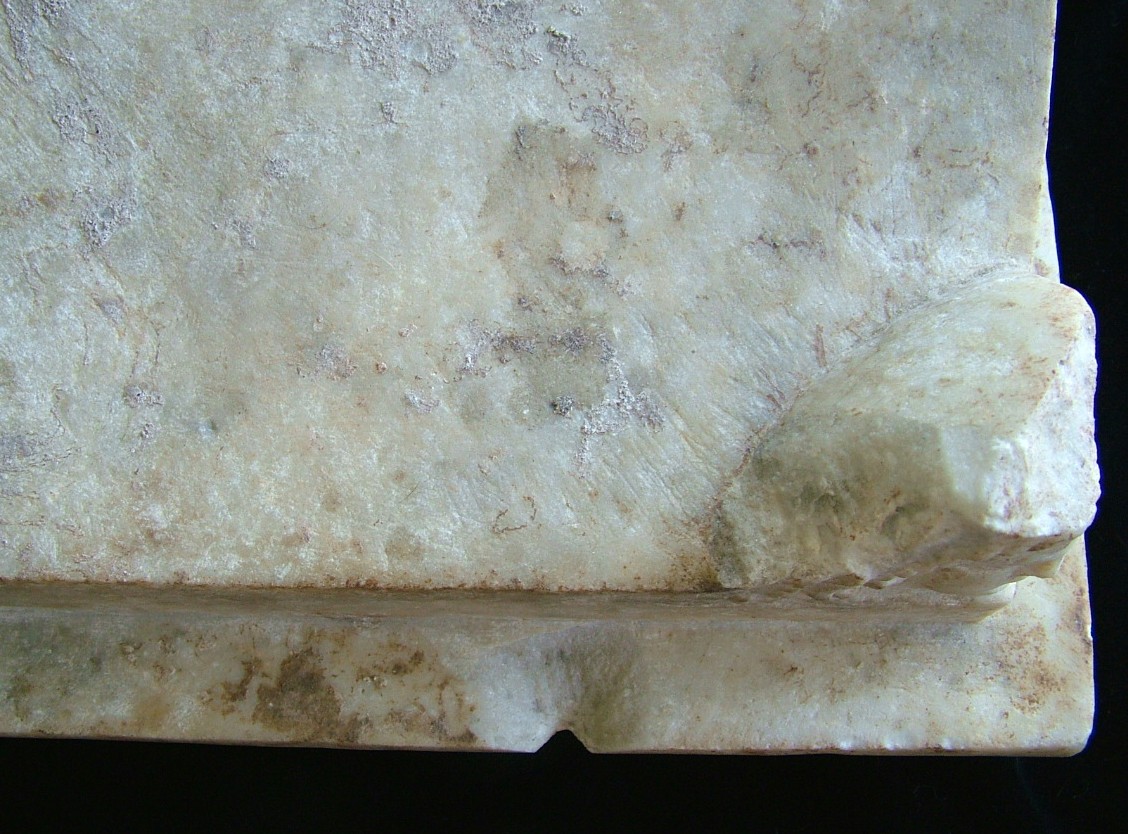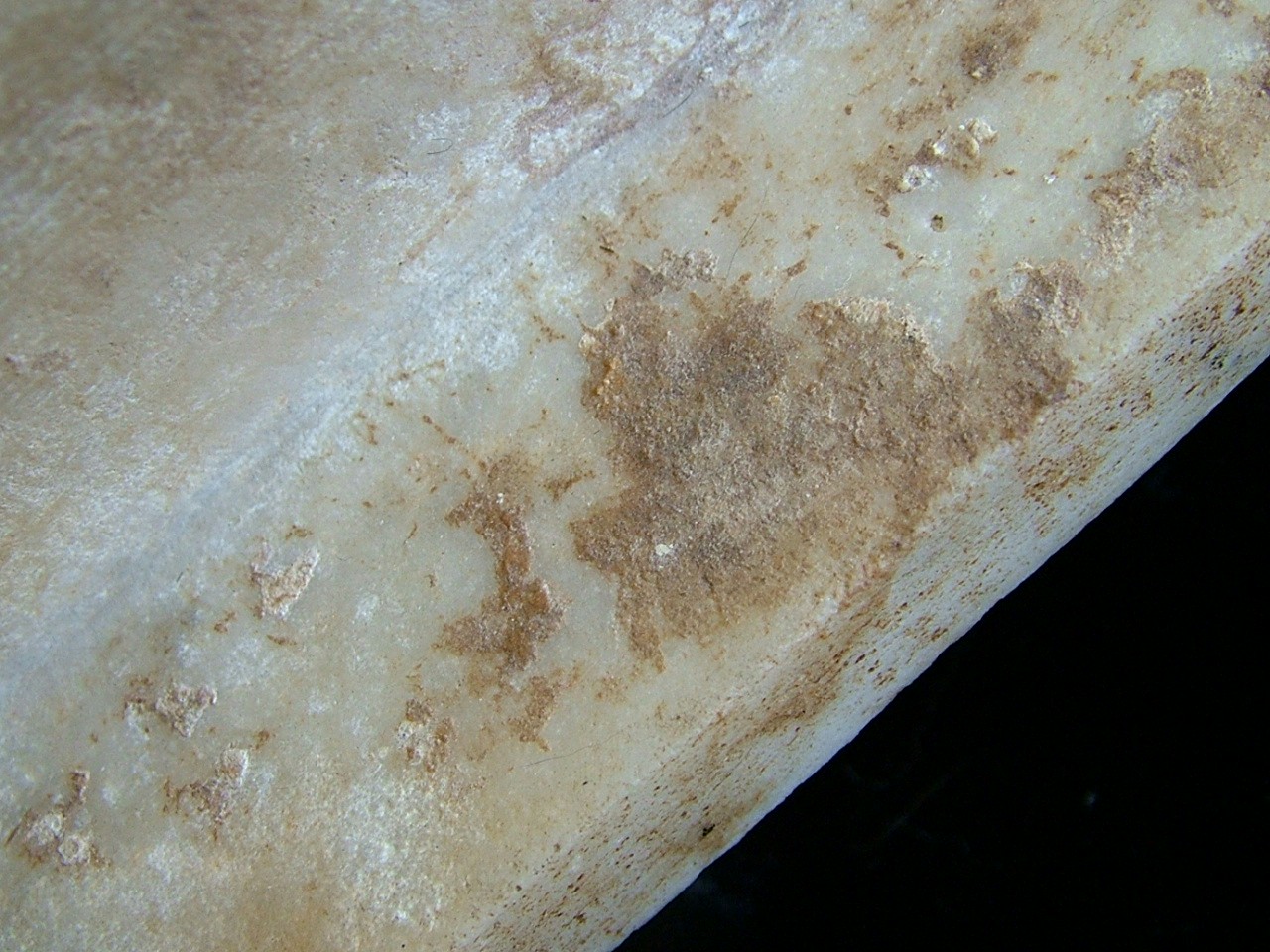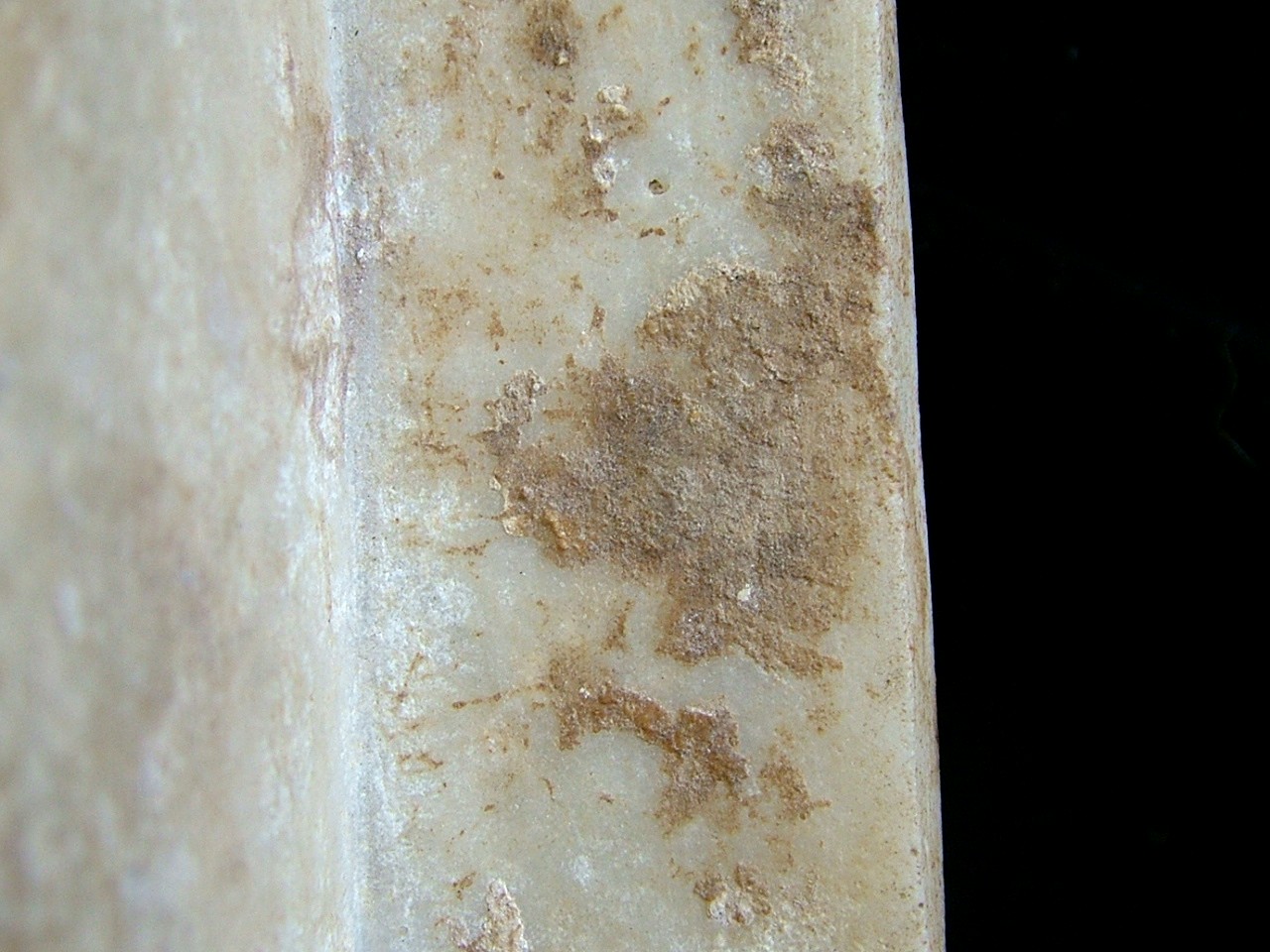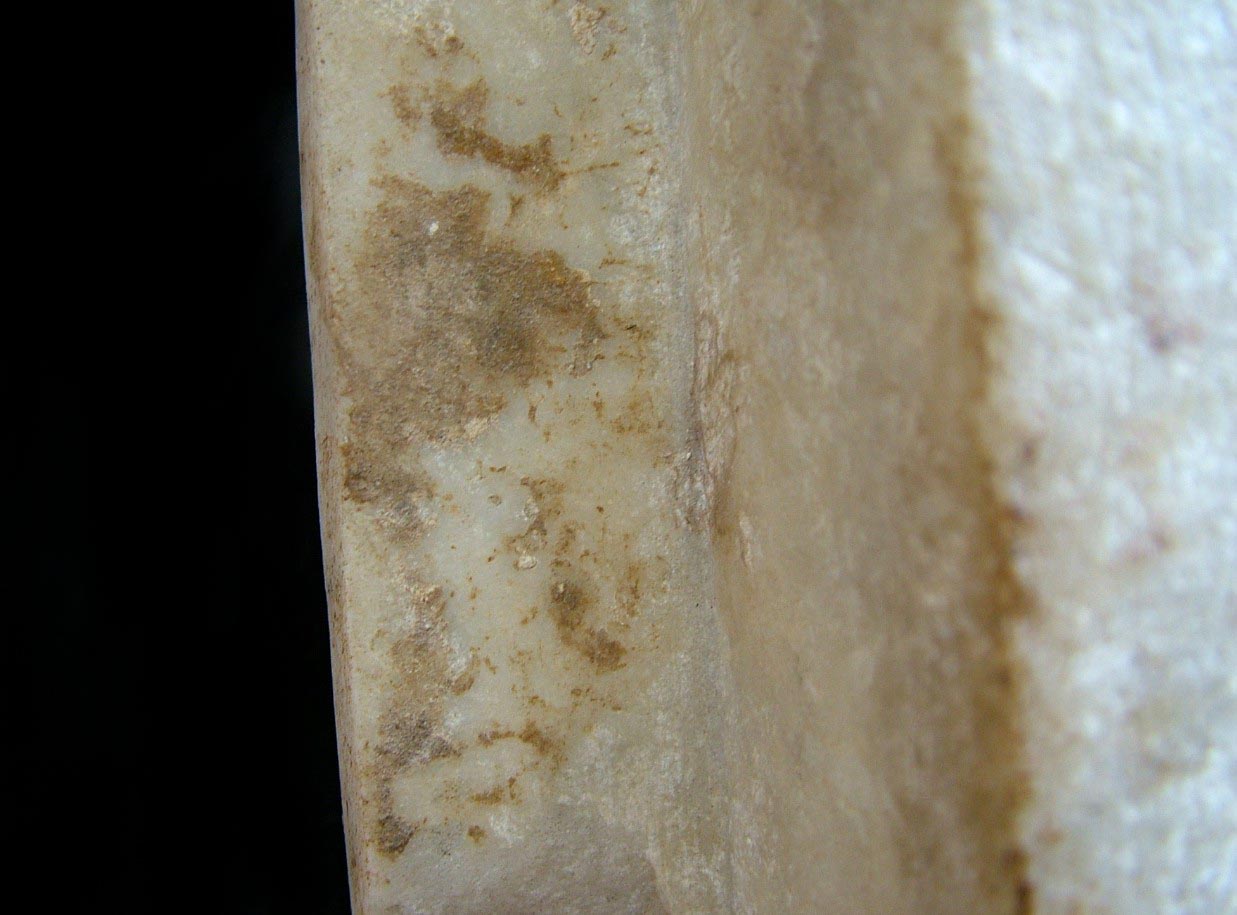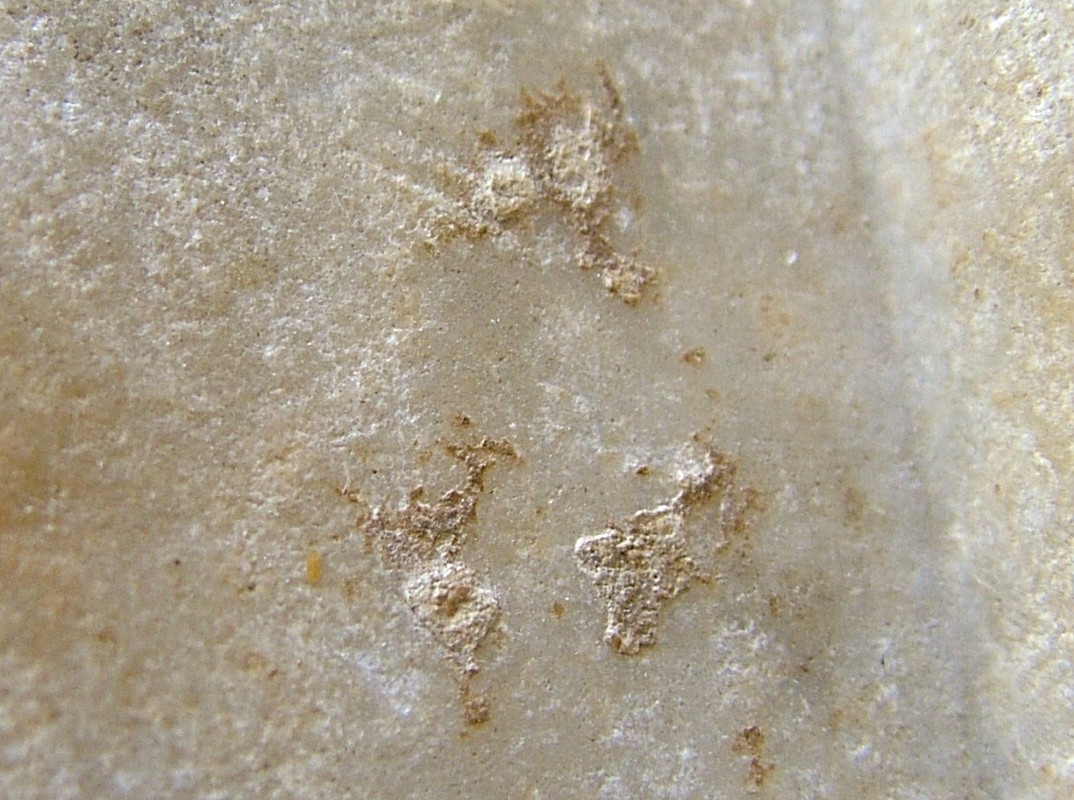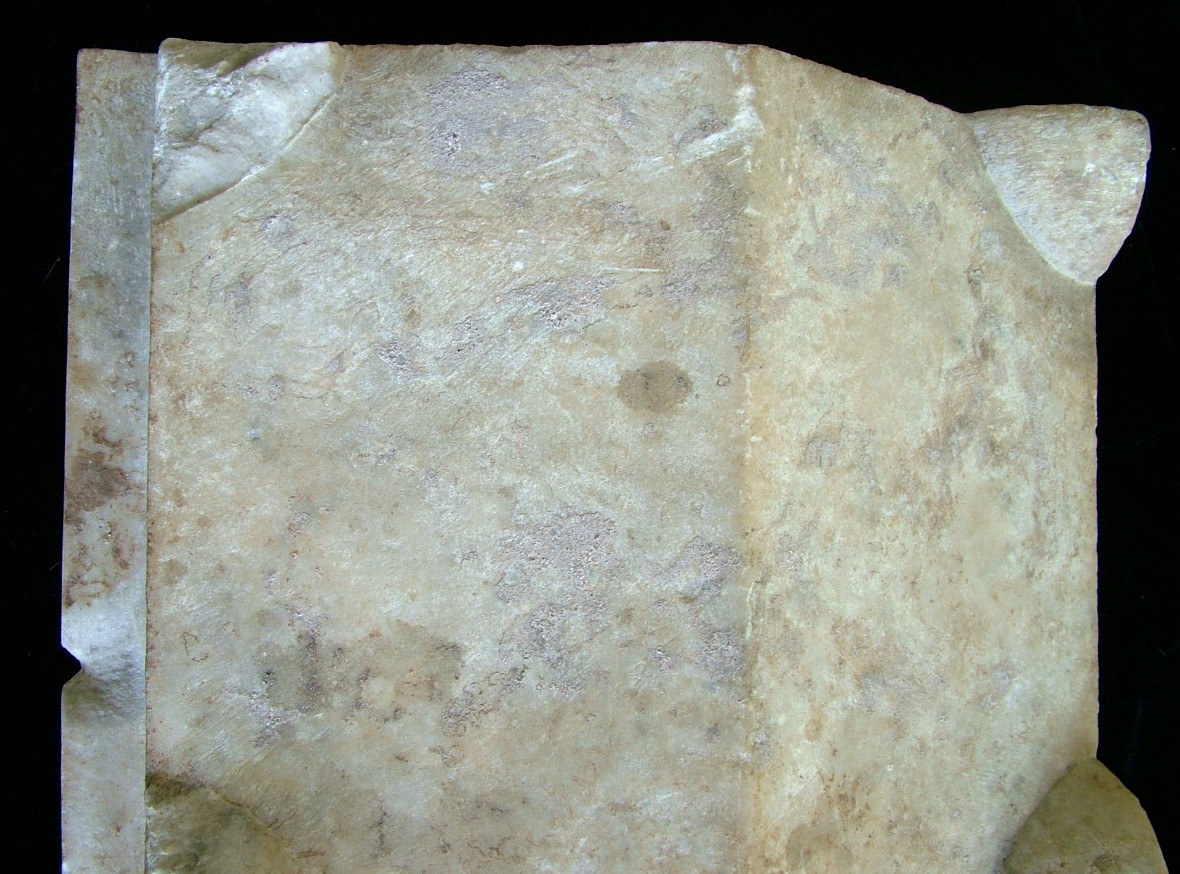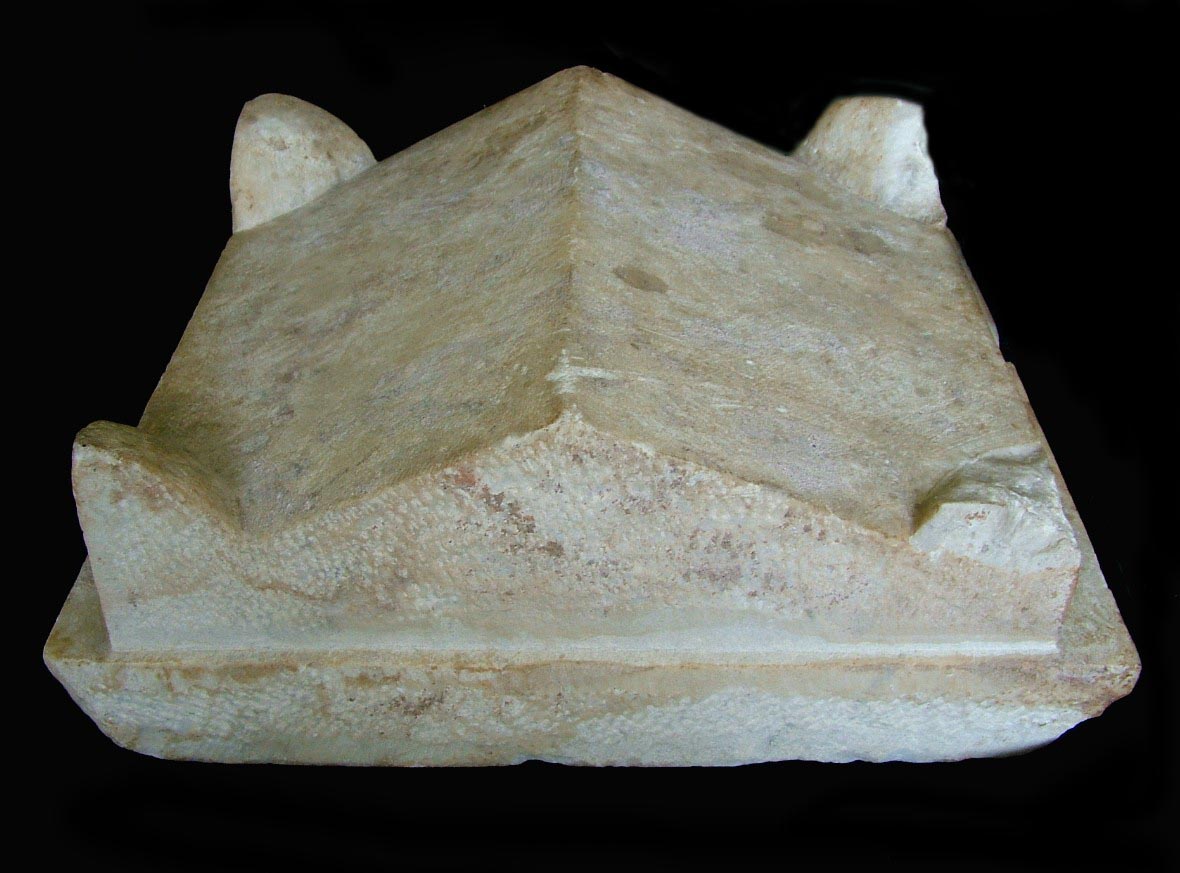 |
|---|
CINERARY TOP OF A STANDARD BEARER OF LEGION I ADIUTRIX |
|
| The ushering in of the New Age of Pieces by Nero and Vespasian, with various conquered beliefs of the East in 68 AD |
|
| Picture Groups 1 thru 5 focuses on a painted area that is 7 cm. in length on the right side on the flat of the rim. Along with the eagle it appears that the art on this area is what had caused quite a bit of excitement with a group of 18th C. AD Gnostics and then later a group of 19th C. revolutionaries that were Carbonari*. In my opinion they interpreted the ancient Roman symbolism and it's meaning correctly. The art/inscription appears to have been put on this piece by an ancient Roman artist for a Classari (Roman Marine) veteran who had served with the deceased in the First Jewish-Roman War. There are hints that the deceased may have initiated his service to Rome as a Classari of the Classis Pontica (Black Sea Fleet) and that he may have been of Sarmatian origin. The main themes are of; Emperor Nero, Vespasian as a victorious Naval General in the Jewish War, the victory of the Naval Battle on Lake Tiberus, the victory at the Battle at Gamla, the conquest of the symbols of the Christian Messianic beliefs, and Nero and Vespasian ushering in the New Age of Pieces. Picture Group 6 focuses on the same art but in a different position. It is of the Sarmatian war /sword god theme. Picture Group 7 focuses on the engraved cement overlay on the top of this piece, among other things it has a theme of a celestial world spike, the water compass, magnetic north, and the Classis Pontica. The art/inscription with this was done with resin (or resins) mixed with paint that are now fossilized. The art/inscription has many various figures, letters, and numbers that tell a story and send a message. There are many pictures may seem to be repetitions, but they are not, for the way this art works is that it will change with distance (as in zooming in and out) and when moved even slightly. The colors are browns, tans, and off whites; as seen these are very light colors and have only slight contrast, so it may take up to half hour or more of viewing with this area in order to achieve effective viewing. Picture Group 8 focuses on the art on the back of the piece. Some of this art has themes of the Parthians and Samaritans; these are of a sacred horseman, sacred lance, and sacred cup, this is somehow connected to the celestial world spike. * There are a few indicators that the Gnostics and Carbonari that owned this piece as a cult object may have correctly identified the eagle and it's association with the Classarii of Misenum who had a dedication to Misenus,, Aneas, and the Sybil of Cumae. If so then they may have been attempting to connect that information to the founding of a New Rome in the 19th and 18th centuries. This would make sense as they definitely associated the theme of the eagle itself and the art/inscriptions on the flat of the rim (of the ushering in the Age of Pieces seen with Picture Groups 1 thru 5) and the reworked cinerary box with ushering in a New Age of Aquarius. Picture Group 1This group of pictures shows the front of the right rim of the piece and the painted area towards the middle. Towards the front there is a large chipped area that has carvings on it. This may have been purposely done as after viewing countless ancient Roman marble objects for well over thirty five years I have come to the conclusion that at least some of the breakage seen on artifacts had been purposely done by admirers, in the instance of funerary objects then it was likely done by family and friends of the deceased. It appears that any fragments were kept as mementoes or perhaps as offerings. This type of breakage or the fragment of such is always seen decorated with miniature art. It appears that breaking or chipping off a fragment and decorating it with certain art and inscriptions may have not been seen as an offence. One of the finest examples I have seen of this type of fragment is the Marble Icon of Dux Lucius Artorius Castus. |
|
| Picture Group 2 |
|
| Information. |
|
| Picture Group 3 |
|
| Information. |
|
| Picture Group 4 |
|
| Information. |
|
| Picture Group 5 |
|
| Information. |
|
| Picture Group 6 |
|
| Information. |
|
| Picture Group 7 |
|
| Information. |
|

